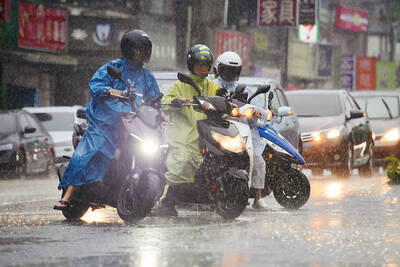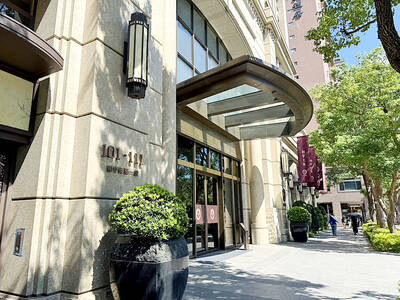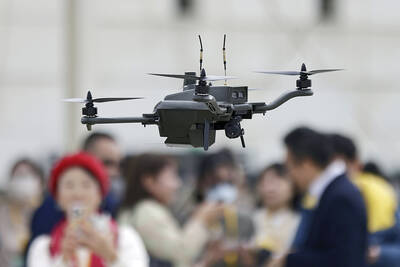For the world's airlines, the past three years have been a long nightmare. Buffeted by the continuing fallout from the terrorist attacks of Sept. 11, 2001, a sluggish global economy and price competition from upstarts, established airlines are facing unusually intense financial pressures.
Needless to say, it has not been a great time for advertising. Many airlines have sharply cut spending.
With their remaining budgets, airlines have generally turned away from traditional "image" ads extolling the quality of their service or that warm and contented feeling of their passengers. Instead, they have focused on price, or specific features like the angle of recline on a business-class seat.
But as air travel picks up a bit, a few full-service airlines are once again trying the image approach. The campaigns seek to distinguish the major airlines from their low-fare rivals, while conveying a sense of security to nervous post-Sept. 11 travelers.
Last spring, United Airlines, a unit of the UAL Corp, introduced an unusual animated television ad campaign by Fallon Worldwide, part of the Publicis Groupe. It used the voice of Robert Redford and said, "It's time to fly."
Several Asian airlines have also stepped up their use of image campaigns as long-haul traffic rebounds.
And last week, Lufthansa introduced new advertisements that take what Harald Eisenaecher, vice president for marketing, called an emotional approach. That is a departure for Lufthansa, whose recent ads have highlighted fares and services like Flynet, the carrier's airborne Internet access.
"During the crisis years, we couldn't focus so much on quality and differentiation," he said. "But those are very important elements for a network carrier."
The campaign, created by the Berlin affiliate of the Interpublic Group of Companies' McCann-Erickson agency network, will include print, online and outdoor ads, as well as direct marketing. It employs simple images that are easily adaptable for more than 40 markets.
One print ad shows a sleeping couple aboard a plane. Beneath the Lufthansa logo, clearly visible on the seat back, the ad reads: "Pilots who are perfectly trained. Mechanics who double-check every bolt. Flight attendants who leave you in a land of dreams. All for this one moment."
The ads include the company's previous slogan, "There's no better way to fly."
"Customers are very much the focus, not aircraft metal or speed or something," Eisenaecher said.
Media spending is being managed by WPP Group's MindShare unit. In euros, Eisenaecher said, it comes to the "low double-digit millions." That will bring Lufthansa back to roughly pre-Sept. 11 spending levels, he added. Like other carriers, it had cut back sharply.
In the US alone, airline ad spending fell to US$678 million last year, from US$2.4 billion in 2000, according to TNS Media Intelligence/CMR, an industry research firm. In the first six months of the year, it reached US$375 million.
Another major European airline, British Airways, which in the spring introduced its first brand campaign in about four years, was forced to pull the ads from television and radio last week amid service disruptions at Heathrow Airport in London. Dozens of flights were canceled because of a shortage of ground staff, leaving thousands of people stranded.
Apparently, images of a businessman being flown by British Airways to meet his family on vacation -- backed by orchestral music and the tagline "the way to fly" -- did not blend well with television news reports of angry travelers.
"We did defer some of the ads but will reinstate them shortly," a British Airways spokeswoman said.

The combined effect of the monsoon, the outer rim of Typhoon Fengshen and a low-pressure system is expected to bring significant rainfall this week to various parts of the nation, the Central Weather Administration (CWA) said. The heaviest rain is expected to occur today and tomorrow, with torrential rain expected in Keelung’s north coast, Yilan and the mountainous regions of Taipei and New Taipei City, the CWA said. Rivers could rise rapidly, and residents should stay away from riverbanks and avoid going to the mountains or engaging in water activities, it said. Scattered showers are expected today in central and

COOPERATION: Taiwan is aligning closely with US strategic objectives on various matters, including China’s rare earths restrictions, the Ministry of Foreign Affairs said Taiwan could deal with China’s tightened export controls on rare earth metals by turning to “urban mining,” a researcher said yesterday. Rare earth metals, which are used in semiconductors and other electronic components, could be recovered from industrial or electronic waste to reduce reliance on imports, National Cheng Kung University Department of Resources Engineering professor Lee Cheng-han (李政翰) said. Despite their name, rare earth elements are not actually rare — their abundance in the Earth’s crust is relatively high, but they are dispersed, making extraction and refining energy-intensive and environmentally damaging, he said, adding that many countries have opted to

FORCED LABOR: A US court listed three Taiwanese and nine firms based in Taiwan in its indictment, with eight of the companies registered at the same address Nine companies registered in Taiwan, as well as three Taiwanese, on Tuesday were named by the US Department of the Treasury’s Office of Foreign Assets Control (OFAC) as Specially Designated Nationals (SDNs) as a result of a US federal court indictment. The indictment unsealed at the federal court in Brooklyn, New York, said that Chen Zhi (陳志), a dual Cambodian-British national, is being indicted for fraud conspiracy, money laundering and overseeing Prince Holding Group’s forced-labor scam camps in Cambodia. At its peak, the company allegedly made US$30 million per day, court documents showed. The US government has seized Chen’s noncustodial wallet, which contains

SUPPLY CHAIN: Taiwan’s advantages in the drone industry include rapid production capacity that is independent of Chinese-made parts, the economic ministry said The Executive Yuan yesterday approved plans to invest NT$44.2 billion (US$1.44 billion) into domestic production of uncrewed aerial vehicles over the next six years, bringing Taiwan’s output value to more than NT$40 billion by 2030 and making the nation Asia’s democratic hub for the drone supply chain. The proposed budget has NT$33.8 billion in new allocations and NT$10.43 billion in existing funds, the Ministry of Economic Affairs said. Under the new development program, the public sector would purchase nearly 100,000 drones, of which 50,898 would be for civil and government use, while 48,750 would be for national defense, it said. The Ministry of